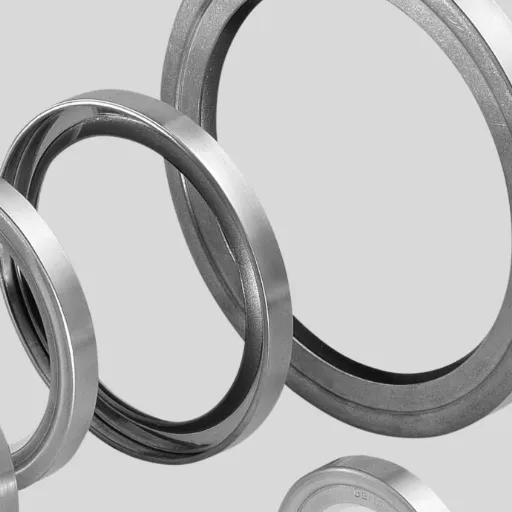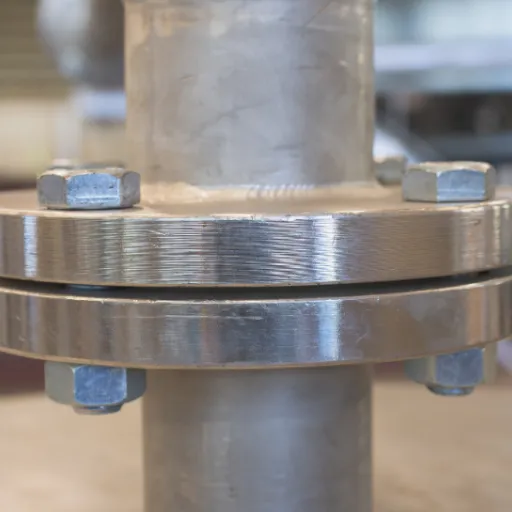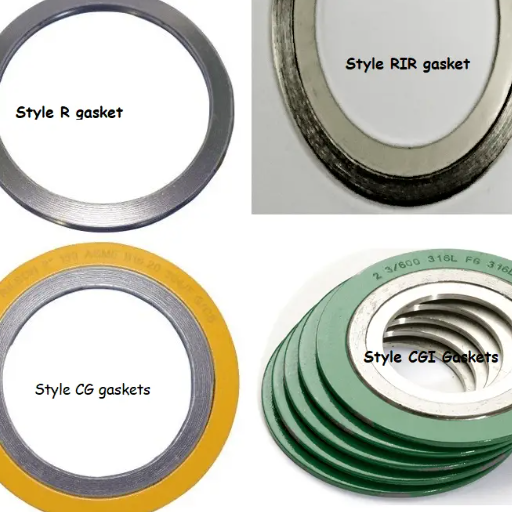Knowing flange bolt sizes is vital in ensuring the strength, safety, and compatibility of piping systems in various industries. This comprehensive guide covers pipe flange sizes, bolt sizes, and other specifications to help you make informed decisions during installation or maintenance. Whether you’re working with ANSI, ASME, or other flange standards, this guide will help you choose the appropriate bolts according to flange size, materials, and applications to ensure smooth and efficient operation.
Understanding Flange Bolts

Flange bolts are the critical components that hold two flanges together, providing a tight yet reliable connection in a piping system. Proper selection requires careful consideration of several factors to ensure compatibility and maintain structural integrity.
What are Flange Bolts?
Flange bolts are specialized fasteners designed to secure flanges together in piping systems, machinery, and industrial environments. They ensure:
- Structural integrity of the joint
- Tight seal to prevent leakage
- Reliable operation under variable pressures and temperatures
- Safe performance in demanding industrial conditions
Types of Flange Bolts
Different applications require different flange bolt designs, materials, and thread types:
| Bolt Type | Description | Best Applications |
|---|---|---|
| Hex Bolts | Six-sided head for wrench or socket use | General purpose, easy installation |
| Square Head Bolts | Better gripping ability | Specific applications requiring enhanced grip |
| Serrated Flange Bolts | Enhanced grip with serrations | Vibration-prone environments |
| Flange Stud Bolts | Threaded rod without head | Heavy-duty applications |
Common Materials
- Carbon Steel: Standard applications
- Stainless Steel: Corrosion resistance
- Alloy Steel: High-stress conditions
Thread Types
- Coarse Thread: Quick assembly
- Fine Thread: Tighter, more secure assembly
Applications of Flange Bolts
Flange bolts are indispensable across various industries:
- Pipeline Assembly: Secure, leak-proof connections for fluid/gas systems
- Heavy Machinery: Automotive manufacturing and construction
- Chemical Processing: Corrosive environment resistance
- Oil and Gas: Extreme temperature and pressure applications
- Power Generation: High-temperature applications
Flange Bolt Chart Overview

The flange bolt chart is a vital reference tool for selecting proper bolt sizes, materials, and grades for various applications, ensuring dimensions conform with flange sizes, pressure ratings, and environmental factors.
Importance of a Flange Bolt Chart
Flange bolt charts serve as valuable tools for:
- Engineers and Technicians: Quick specification verification
- Maintenance Professionals: Proper replacement part selection
- Quality Assurance: Compliance with industry standards
- Safety Management: Preventing system failures
How to Read a Flange Bolt Chart
Follow these steps for proper chart interpretation:
- Identify flange type and size – These dictate bolt requirements
- Determine pressure rating – Usually expressed as 150 lb, 300 lb, etc.
- Find corresponding specifications:
- Bolt diameter
- Number of bolts
- Recommended bolt length
- Confirm thread specifications – Ensure compatibility
- Compare with project requirements – Verify all details match
Key Dimensions in the Flange Bolt Chart
| Dimension | Description | Importance |
|---|---|---|
| Bolt Diameter | Thickness of the bolt | Must fit securely into flange holes |
| Bolt Length | Head to thread end measurement | Accounts for flange thickness and gasket |
| Number of Bolts | Total bolts required | Ensures balanced load distribution |
| Bolt Circle Diameter | Distance across opposed hole centers | Determines proper hole spacing |
ASME B16.5 Standards

ASME B16.5 is the vital industrial standard specifying dimensions for pipe flanges and flanged fittings, ensuring safety, reliability, and compatibility across systems.
Overview of ASME B16.5
ASME B16.5 provides comprehensive guidelines covering:
- Dimensions: Precise measurements for all flange types
- Materials: Carbon steel, stainless steel, nickel alloys
- Pressure-Temperature Ratings: Safe operating limits
- Tolerances: Acceptable variation ranges
- Testing Requirements: Quality assurance protocols
Flange Dimensions According to ASME B16.5
The standard specifies dimensions for pressure classes ranging from Class 150 to Class 2500, including:
| Specification | Purpose |
|---|---|
| Outer Diameters | Overall flange size |
| Thickness | Structural integrity |
| Bolt Circle Diameters | Bolt placement |
| Bolt Hole Diameters | Bolt compatibility |
| Number of Bolt Holes | Load distribution |
| Bolt Hole Location | Precise positioning |
Flange Types Covered
- Weld Neck Flanges
- Slip-On Flanges
- Blind Flanges
- Threaded Flanges
Applications of ASME B16.5 Standards
These standards are essential in:
- Oil and Gas Industry: High-pressure applications
- Chemical Processing: Corrosive environments
- Power Generation: High-temperature systems
- Water Treatment: Municipal and industrial systems
Selecting the Right Flange and Bolt Combination

Proper selection is critical for safety and performance. Consider all operating conditions and consult relevant standards before making final decisions.
Factors to Consider When Choosing Flange Bolts
| Factor | Considerations | Impact |
|---|---|---|
| Material Compatibility | Flange, bolt, and gasket materials | Prevents corrosion and material weakening |
| Size and Fit | Bolt size, threads, and length | Ensures precise fit and proper alignment |
| Pressure and Temperature | Operating conditions | Determines required bolt grade and strength |
| Environmental Factors | Chemical exposure, temperature extremes | Affects coating and treatment requirements |
| Industry Standards | ASME B16.5 compliance | Ensures safety and regulatory compliance |
Common Mistakes to Avoid
Avoiding these common errors can prevent costly failures and safety hazards:
- Material Incompatibility: Not checking bolt and flange material compatibility
- Improper Torque: Under or over-tightening bolts
- Ignoring Environmental Conditions: Not considering corrosive effects or temperature extremes
- Skipping Inspections: Failing to detect wear or damage early
- Non-compliance: Not following ASME B16.5 standards
Expert Recommendations
- Use High-Quality Bolts: Invest in quality for critical applications
- Choose Appropriate Materials: Consider corrosion resistance and temperature ranges
- Implement Regular Maintenance: Schedule periodic inspections
- Follow Standards: Adhere to ASME B16.5 specifications
- Maintain Proper Installation: Use correct torque specifications
Comprehensive Guide to Pipe Fittings

Understanding how pipe fittings relate to flange bolts is essential for complete system design.
Types of Pipe Fittings
| Fitting Type | Function | Common Angles/Sizes |
|---|---|---|
| Elbows | Change flow direction | 45°, 90° |
| Tees | Split and join flows | Equal, reducing |
| Reducers | Connect different pipe sizes | Concentric, eccentric |
| Couplings | Join pipe sections | Full, half |
How Pipe Fittings Relate to Flange Bolts
Flange bolts and pipe fittings work together to create durable piping systems:
- Structural Integration: Bolts secure flanged fittings to pipes and equipment
- System Flexibility: Fittings enable complex routing while bolts ensure secure connections
- Maintenance Access: Bolted connections allow for easy disassembly
- Pressure Containment: Proper bolt selection ensures system can handle required pressures
Best Practices for Installation
- Material Compatibility Check: Verify all components work together
- Proper Alignment: Ensure precise fitting alignment
- Correct Torque Application: Follow manufacturer guidelines
- Quality Assurance: Confirm proper seating of all components
- System Testing: Verify pressure containment and structural stability
References
- Flange Bolting Torque Chart
This guide explores the usage, limitations, and alternatives of flange bolting torque charts.
Link to source - Fastenal Fastener Technical Reference Guide
This document provides detailed information on ASTM A307 Grade B bolts used in piping and flange work.
Link to source - Fastenal Fastener Technical Reference Guide
Another version of the Fastenal guide, offering insights into materials and components for pressure vessels and flange work.
Link to source - Top Flange Bolt Suppliers in China
Frequently Asked Questions (FAQ)
What are the different types of flange bolts?
Flange bolts come in various types, including hex flange bolts, serrated flange bolts, and flange stud bolts. Each type serves specific applications and is designed to meet different flange needs. Hex flange bolts provide a built-in washer for better load distribution, while serrated flange bolts feature serrations for enhanced grip. It’s essential to choose the right type of flange bolt based on the material and quantity needed for your project. Always consult the flange bolt chart for guidance on specifications and compatibility.
How do I select the right flange bolt product?
Selecting the right flange bolt product involves understanding the application requirements, including load, environmental conditions, and the materials involved. You should also consider the specifications outlined in standards like ASME B16.5 and API for compatibility. Evaluating the role of the bolt in your assembly is crucial; for instance, if vibration is a concern, a serrated flange bolt may be a better solution. Consulting with a trusted supplier can also provide insights into the best products for your needs.
What is a flange bolt chart, and how do I use it?
A flange bolt chart is a valuable tool that provides basic information on various flange bolts, including dimensions, grades, and materials. You can use the chart to determine the correct size and type of flange bolt required for your project. It helps in matching the bolt with the appropriate flange and nut to ensure a secure connection. By referencing the chart, you can also find the right quantity of bolts needed for your application, minimizing waste and enhancing efficiency.
What is the importance of flange bolts in metal applications?
Flange bolts play a critical role in metal applications by providing secure and stable connections in various assemblies. These bolts are designed to withstand high levels of stress and environmental factors, making them ideal for construction and industrial applications. Properly installed flange bolts help distribute loads evenly, reducing the risk of failure. Understanding the different types of flange bolts and their specifications is essential for ensuring safety and longevity in metal projects.
How do I determine the quantity of flange bolts I need?
Determining the quantity of flange bolts needed involves assessing the design and specifications of your project. Start by reviewing the flange bolt chart to identify the required size and type. Next, consider factors such as the number of connections and the load each bolt will bear. It’s also wise to factor in a few extra bolts to account for any errors or future repairs. Consulting with an expert can provide additional guidance on quantity calculations based on your specific application.






